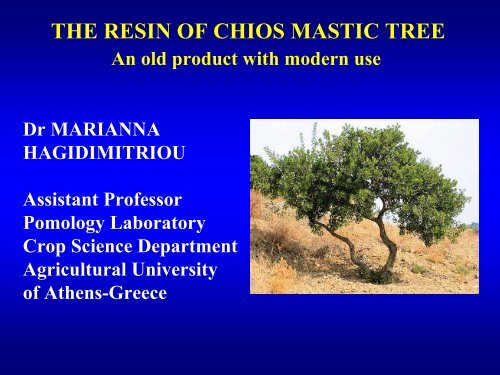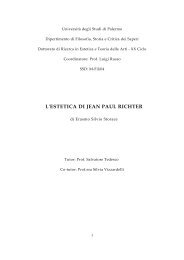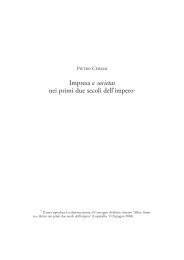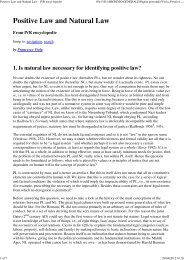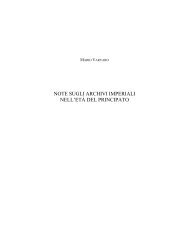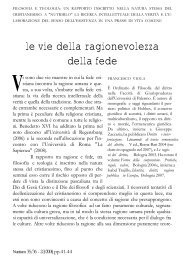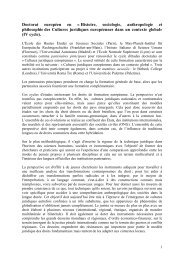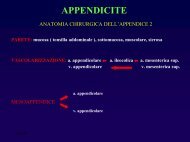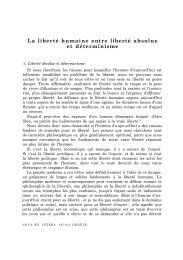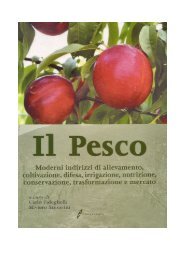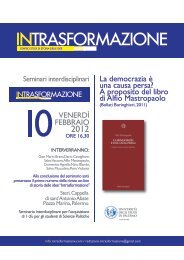THE RESIN OF CHIOS MASTIC TREE
THE RESIN OF CHIOS MASTIC TREE
THE RESIN OF CHIOS MASTIC TREE
Create successful ePaper yourself
Turn your PDF publications into a flip-book with our unique Google optimized e-Paper software.
<strong>THE</strong> <strong>RESIN</strong> <strong>OF</strong> <strong>CHIOS</strong> <strong>MASTIC</strong> <strong>TREE</strong><br />
An old product with modern use<br />
Dr MARIANNA<br />
HAGIDIMITRIOU<br />
Assistant Professor<br />
Pomology Laboratory<br />
Crop Science Department<br />
Agricultural University<br />
of Athens-Greece
<strong>THE</strong> <strong>MASTIC</strong> <strong>TREE</strong><br />
PISTACIA LENTISCUS VAR. CHIA<br />
The Mastic tree (Pistacia lentiscus var. chia) is a<br />
dioecious evergreen shrub or small tree belonging to<br />
the Anacardiaceae family<br />
It is cultivated for its aromatic resin on the Greek<br />
island of Chios, in the Aegean Sea<br />
Mastic tree thrives and gives mastic only in the south<br />
part of the island of Chios and nowhere else in the<br />
world
Historical Background<br />
Fossils of mastic tree leaves found on the island reveal<br />
its existence on the island six thousand years ago<br />
suggesting that its origin comes from this island<br />
Herodotos, on the 5th century BC, mentions that the<br />
resin product from the phloem of the mastic tree was<br />
used for chewing<br />
Hippocrates suggests the mastic resin as a cure and<br />
Diomides mentions its therapeutic usage in his work<br />
The Greek physician and botanist Dioscorides wrote<br />
about the medicinal properties of mastic in his classic<br />
treatise De Materia Medica
Chios island and the Mastic Villages in the south part of it,<br />
where the mastic tree is cultivated
Mastic resin
Mastic resin has been used as a chewing gum and as a<br />
medicine for gastrointestinal ailments for several<br />
thousand years<br />
Mastic is known to have been popular in Roman times<br />
when children chewed it<br />
In Medieval times it was highly prized for the Sultan’s<br />
harem both as a breath refreshener and for cosmetics<br />
The spice's use was widened when Chios became part<br />
of the Ottoman Empire
Nowadays, about 2.000.000 mastic trees are cultivated<br />
in the south part of the island<br />
Mastic is collected in raw form and it is concentrated,<br />
standardized, packed and traded by the Chios' Gum<br />
Mastic Growers Association having 4,850 members<br />
The Association was created in 1938 to help<br />
commercialize the product and ensure the income of<br />
the growers<br />
The Association ensures the quality of the product by<br />
utilizing modern technology in process and packing,<br />
and by constantly increasing the production volumes<br />
encouraging new cultivations
Geographical Distribution<br />
Attempts to cultivate and produce the high quality<br />
resin produced from these trees in other areas of the<br />
world were unsuccessful<br />
The island's climate is warm and moderate,<br />
categorized as Mediterannean<br />
Average temperatures normally range from a summer<br />
high of 27°C to a winter low of 11°C in January<br />
Temperatures of over 40°C or below freezing can<br />
sometimes be encountered
Rainfall while usually plentiful, varies greatly both<br />
throughout the year and between years<br />
Rain is rare during the summer months, but the<br />
winters are changeable and wet<br />
Sunshine is plentiful, as is typical of the Eastern<br />
Mediterranean, with almost no cloud cover in the<br />
summer months<br />
Average humidity varies from 75% in winter to 60%<br />
in summer
Botany<br />
Pistacia lentiscus var. chia can grow as irregular shrub<br />
or a single to multistemmed tree, up to 3-4 m tall<br />
The flowers grow in dense panicles or spikes and the<br />
anthers are dark red for male flowers and grenish for<br />
female<br />
The leaves are dark green, with 6-18 leaflets, leathery<br />
pinnate and distinctive for the lack of an end leaflet<br />
Blooming time is in mid May to July
Mastic Tree
Mastic Tree Orchard
Flowers and leaves of Mastic tree
leaf of Mastic tree
Genotypes<br />
In studies for the genetic relationships among Pistacia<br />
species, Pistacia lentiscus var. chia was grouped<br />
together with the evergreen Pistacia lentiscus, male<br />
and female<br />
The deciduous Pistacia species (P. vera, P. palaestina<br />
and P. terebinthus) were grouped in a different<br />
branch<br />
The male mastic tree gives the highest and best<br />
quality resin
Pistacia<br />
species relationships<br />
RAPD AFLP
Morphological characteristics suggest the existence of<br />
different genotypes in the male mastic tree<br />
The different genotypes also differ in quantity and<br />
quality of the resin production<br />
The four major genotypes of the male mastic tree,<br />
‘Votomos’, ‘Maroulitis’, ‘Mavroskinos’ and<br />
‘Siderakikos’, have distinct phenotypes and can be<br />
easily identified
Different male genotypes<br />
VOTOMOS
Different male genotypes<br />
MAROULITIS
Different male genotypes<br />
MAVROSCHINOS
Different male genotypes<br />
SIDERAKIKOS
The genetic diversity among the different male<br />
genotypes and the female mastic tree was also studied<br />
using two different molecular techniques, RAPD and<br />
ISSRs<br />
Based on the molecular results, the entries showed<br />
genetic diversity among the genotypes and within the<br />
different individuals<br />
The female tree was grouped separately from the four<br />
different male genotypes
Genetic relationships among genotypes<br />
SIDERAKIKOS-1MW<br />
0.24 0.37 0.50<br />
Coefficient<br />
0.62 0.75<br />
SIDERAKIKOS-1<br />
SIDERAKIKOS-2<br />
MAYROSXINOS-1<br />
MAYROSXINOS-2<br />
MAYROSXINOS-3<br />
BOTOMOS-1<br />
BOTOMOS-2<br />
MAROULITIS-1<br />
MAROULITIS-2<br />
MAROULITIS-3<br />
FEMALE
Orchard management - Harvest<br />
The mastic tree is an evergreen shrub resistant to<br />
drought, with a slow growth and lives over a hundred<br />
years<br />
The male tree gives the highest quantity and best<br />
quality resin, starting on the 5 th -6 th year with highest<br />
production after the 15 th year<br />
Care for the mastic groves is a year-round job carried<br />
out by the families of the mastic-producers’ union
The winter months involve pruning and thinning of<br />
the branches, followed by clearing and weeding the<br />
area under the trees until it is smooth<br />
The preparation of the mastic tree and collection of<br />
mastic is a laborious job that starts at the beginning<br />
of June, and is carried on until September or October<br />
The collection of mastic begins with first cleaning the<br />
area under the tree and then covering it with white<br />
clay<br />
This way the tears will stay clear and dry faster as<br />
they fall onto the ground
Cleaning the area under the tree
Covering the area under the tree with<br />
white clay
Different tools used for mastic tree<br />
preparation<br />
and mastic resin collection
The ‘kendos’ begins in June and lasts through<br />
September<br />
The mastic producers make an incision along the tree<br />
trunk and branches of every tree, twice a week, in the<br />
shape of an arch with the ‘kentitiri’<br />
The incision is 4-5 mm deep and 10-15 mm long<br />
A tree can receive between 20 and 100 slits, depending<br />
on its age.
Incision on the tree branches (kentima)<br />
with ‘kentitiri’
Mastic resin
Mastic ‘tears’
When the tears have been coagulated, the mastic<br />
collectors use the ‘timitiri’ to gather the precious<br />
crystals<br />
The resin usually takes 10 to 20 days to crystallize and<br />
the first harvest during the second half of August yields<br />
bigger tears<br />
The mastic collectors start then the sifting, the cleaning<br />
of the crystals with soap and cold water, the drying and<br />
the scratching of the mastic tears
‘Timitiri’ for collecting the resin crystals
Resin crystals on the ground
‘Koskina’ for shifting
Cleaning the mastic resin
Resin from the ground (left) and cleaned (right)
The second harvest lasts from mid-September until<br />
mid-October or the first rain storm, while cleaning<br />
the crystals for processing may last until pruning time<br />
The collection is governed by a law according which it<br />
is prohibited to make cuttings on gum mastic trees<br />
and gum mastic collection before July 15 th and after<br />
October 15 th , every year<br />
The last date can be extended for a fortnight by the<br />
prefect’s permission
Characteristics of mastic resin<br />
Mastic gum looks like rock candy and has a<br />
distinctive taste and chewiness
The product in raw form is available in different<br />
grades, 1 to 5, and in different sizes, large tears and<br />
small tears<br />
The grades define the purity of the product<br />
Grade 1 is the most pure mastic suitable for direct<br />
human consumption<br />
Grade 3 to 5 is suitable for all other uses and may<br />
contain different tear sizes and small tree remains
The chemical analysis of mastic resin:<br />
- essential oil (mastic oil) 1 - 3%<br />
- a- and b-masticinic acid 4%<br />
- masticholic acid 0.5%<br />
- a- mastichonic acid 20%<br />
- b mastichonic acid 18%<br />
- a-mastic resin 30%<br />
- b-mastic resin 20%<br />
The mastic oil contains dozens of identified chemical<br />
compounds
Medicinal, pharmaceutical, culinary and<br />
cosmetic uses<br />
Mastic resin is a highly commercialized product due<br />
to its:<br />
medicinal, cosmetic, pharmaceutical and industrial<br />
applications<br />
The most precious of all mastic products, mastic oil,<br />
is used widely in medicine, pharmaceutical industry<br />
and dentistry
Mastic oil contains perillyl alcohol, that has been found<br />
to be effective in both preventing and treating various<br />
cancers<br />
Mastic resin heals also pectic ulcers by killing<br />
Hellicobacter pylori which causes peptic ulcers, gastritis<br />
and duodenitis<br />
Natural mastic gum has also been proven to absorb<br />
cholesterol thus diminishing chances of heart attacks<br />
and high blood pressure, and helps reduce triglycerid<br />
and total lipid levels of the organism
Mastic gum is also used as a flavouring for spirits and<br />
liquors, such as Chios's native drinks of Mastichato &<br />
masticha<br />
Is also used in a number of cakes, pastries, spoon<br />
sweets and desserts and is an important ingredient in<br />
Greek festival breads<br />
Mastic is also used in cosmetics such as toothpaste,<br />
lotions for the hair and skin and perfumes
Mastic products<br />
resin crystals in different sizes
Natural mastic grounded
Mastic oil
Chewing gum with Chios gum mastic
Masticha dessert ‘ipovrichio’
Mastic pie and sweets
Spoon sweets with mastic taste
Cookies and refreshments with mastic taste
Liqueur Masticha
Cosmetics<br />
Toothpastes
Shower gel and Body lotion "Mastic care"
Body creams
Skin Care and Soaps
The Mastich shop of the Grower association
Mastich shop


